- Liliaceae
- Lamiaceae
- Euphorbiaceae
- Leguminosae
- Zingiberaceae
- Chloranthaceae
- Campanulaceae
- Asteraceae
- Acanthaceae
- Orchidaceae
- Polygonaceae
- Ranunculaceae
- Vitaceae
- Rubiaceae
- Solanaceae
- Thymelaeaceae
- Saururaceae
- Moraceae
- Polypodiaceae
- Myrtaceae
- Araceae
- Adiantaceae
- Schisandraceae
- Amaranthaceae
- Berberidaceae
- Araliaceae
- Taxaceae
- Cucurbitaceae
- Apiaceae
- Guttiferae
- Scrophulariaceae
- Papilionaceae
- Caprifoliaceae
- Elaeagnaceae
- Apocynaceae
- Brassicaceae
- Papaveraceae
- Gentianaceae
- Paeoniaceae
- Lauraceae
- Punicaceae
- Nyssaceae
- Ephedraceae
- Gnetaceae
- Polygalaceae
- Violaceae
- Ginkgoaceae
- Cupressaceae
- Dipsacaceae
- Eucommiaceae
- Juglandaceae
- Dryopteridaceae
- Rosaceae
- Huperziaceae
- Caryophyllaceae
- Rhamnaceae

Panax Quinquefolium
- Introduction
- Download
Blast
Panax quinquefolium L., commonly known as American ginseng, belongs to the Araliaceae family and has gained tremendous global trade and recognition as a health food supplement. The dried root powder of this plant has been used extensively for its antitumor, anti-stress, anti-ageing, anti-fatigue, cardioprotective and hepatoprotective properties. Ginsenoside are secondary metabolites of the P. quinquefolium and its major pharmacologically active components. Ginsenosides are divided into protopanaxadiol, protopanaxatriols and oleanolic acid based on their structure.
Year:2016
Institution: Tianjin Key Laboratory for Modern Drug Delivery and High Efficiency, School of Pharmaceutical Science and Technology, Tianjin University, Tianjin 300072, China.
Material: Jilin, China.
Download: http://herbalplant.ynau.edu.cn/index.php?m=content&c=index&a=show&catid=100&id=148
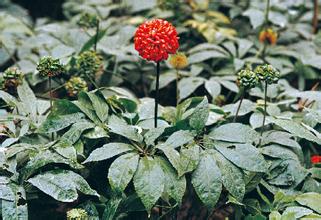
Panax notoginseng
- Introduction
- Download
Blast
Panax notoginseng is a species of the genus Panax, and it is most commonly referred to in English as notoginseng. Like P. ginseng, P. quinquefolius and P. vietnamensis, notoginseng contains dammarane-type ginsenosides as the major constituents. Dammarane type ginsenosides includes 2 classifications: the 20(S)-protopanaxadiol (ppd) and 20(S)-protopanaxatriol (ppt) classifications. P. notoginseng contains high levels of Rb1, Rd (ppd classification) and Rg1 (ppt classification)ginsenosides.
Year:2011
Institution:The Key Laboratory of Bioactive Substances and Resources Utilization of Chinese Herbal Medicine, Ministry of Education, Institute of Medicinal Plant Development, Chinese Academy of Medical Sciences & Peking Union Medical College
Material: Guangzhou, China
Year:2015
Institution:School of Biomedical Sciences, The Chinese University of Hong Kong
Material: Yunnan, China
Data link: http://herbalplant.ynau.edu.cn/index.php?m=content&c=index&a=show&catid=100&id=115
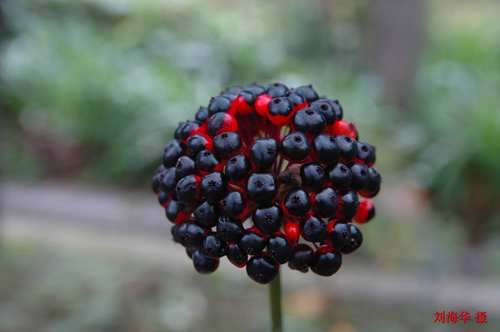
Panax japonicus
- Introduction
- Download
Blast
Panax japonicus C.A.Mey, a perennial herb in the Araliaceae family, has been used as Chinese traditional medicinal herb for thousand years. The earliest history of P. japonicus was recorded in the traditional Chinese medicine book, “Ben Cao Gang Mu Shi Yi” of Bai Cao Jing in the Qing Dynasty (published in 1765 A.D) . In Traditional Chinese Medicine (TCM), rhizomes of P. japonicus was mainly used as a tonic, anti-inflammatory and haemostatic agent in China. Most of their therapeutic effects had been reported due to the presence of triterpenoid saponins, a group of dammarane-and oleanane-type saponins. Compared to Panax ginseng and Panax notoginseng, the level of total triterpenoid saponins of P. japonicus was usually higher and in which oleanane saponins are the main active constituents
1
Year:2015
Institution:School of Biology & Pharmacy Engineering, Wuhan Polytechnic University, Wuhan
Material: Huebei, China
2
Year:2016
Institution: Graduate School of Pharmaceutical Sciences, Chiba University, Chiba, Japan
Material: Janpan
Data link: http://www.herbal-genome.cn/index.php?m=content&c=index&a=show&catid=100&id=116
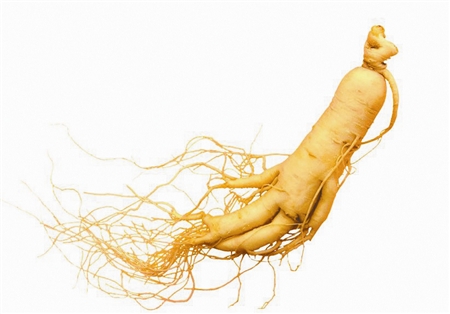
Panax ginseng
- Introduction
- Download
Blast
Panax ginseng, the Chinese ginseng. Ginsenosides, unique compounds of the Panax species, are being studied for their potential as medicine or a dietary supplement. Side effects can include nausea, diarrhea, headaches, nose bleeds, high blood pressure, low blood pressure, and breast pains.
Year:2013
Institution:Institute of Medicinal Plant Development, Chinese Academy of Medical Sciences & Peking Union Medical College
Material: Liangning, China
Data link: http://www.herbal-genome.cn/index.php?m=content&c=index&a=show&catid=100&id=117
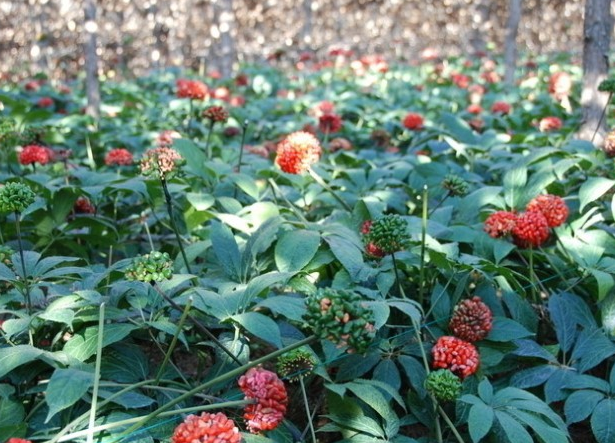
Panax Vietnamensis var.fuscidiscus
- Introduction
- Download
Blast
Panax vietnamensis or Vietnamese ginseng is a species of the ginseng genus Panax. In Vietnam the species, prized in herbal medicine, is commercially very valuable and now considered threatened.
Year:2015
Institution:Yunnan Research Center on Good Agricultural Practice for Dominant Chinese Medicinal Materials, Yunnan Agricultural University
Material: Yunnan, China
Data link: http://herbalplant.ynau.edu.cn/index.php?m=content&c=index&a=show&catid=100&id=118
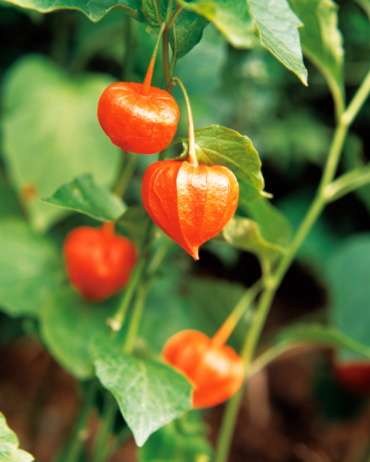
Withania somnifera (L.) Dunal
- Introduction
- Download
Blast
Withania somnifera (L.) Dunal belonging to family Solanceae is commonly known as Ashwagandha or Indian ginseng and is a valued medicinal plant with pharmaceutical and nutraceutical applications. It is widely used in traditional medical systems of India and Africa as an adaptogens or vitalizers. The berries and leaves are applied externally to tumors, tubercular glands, carbuncles, and ulcers. The roots are used to prepare the herbal remedy ashwagandha, which has been traditionally used for various symptoms and conditions.
Year:2013
Institution:Division of Plant Biotechnology, Institute of Forest Genetics and Tree Breeding, R.S. Puram, Coimbatore, Tamil Nadu, India
Material: -
Year:2015
Institution:National Botanical Research Institute, Council of Scientific and Industrial Research (CSIR-NBRI), Rana Pratap Marg, Lucknow, India
Material: India
Data link: http://herbalplant.ynau.edu.cn/index.php?m=content&c=index&a=show&catid=100&id=119